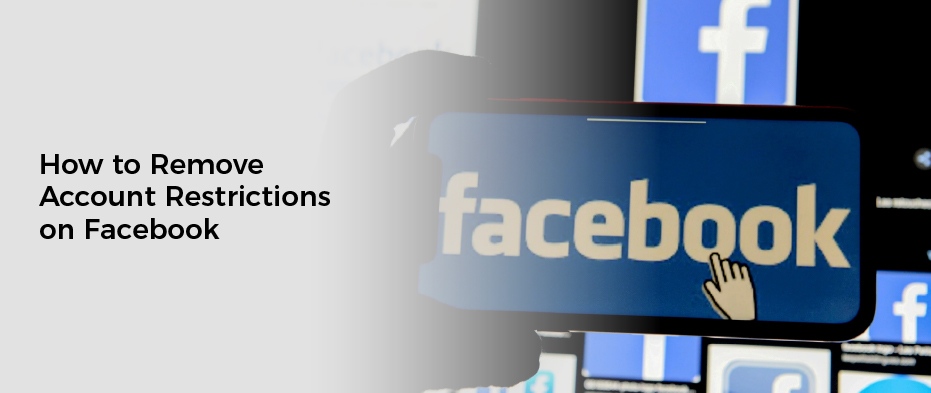If you’re interested in knowing how to limit or remove your account on Facebook, then you’ve come to the right place. This article will explore a few options for limiting your access to Facebook and the methods you can use to clear the cache and cookies on your device. In addition, we’ll cover how to add 2-factor authorisation to your account and how to restrict your access to public figures.
Clearing cache and cookies
If you are having issues with your Facebook account, it’s likely that the problem is a corrupt cache. Cache is a temporary storage of page elements. When you clear cache, it will remove these items, allowing your web browser to function more effectively. This will also free up more space on your computer.
Clearing your cache will not affect your profile, posts, or photos. But it can help troubleshoot a variety of website issues. For example, if your posts aren’t displaying properly, clearing the cache will improve the reload time. However, if you’re having trouble visiting pages, you may need to log out to reestablish a new server connection.
You can use your web browser to clear your Facebook cookies and cache. To do this, click the hamburger icon in the top right corner of your browser. A drop-down menu will appear. Click the Settings link. Select the Cookies and Site Data option. Then, select the time frame. Choose whether you want to clear the whole site or only the pages you visit.
You can also delete individual cookies and cache. In Opera, you can do this by clicking the History icon.
Firefox users can also clear their cache. This includes blocking third-party cookies. Although it’s not foolproof, it does stop Facebook from storing cookies from other sites.
Microsoft Edge also has an option to clear your browser’s cache. You can choose to clear all cache data, just the pages you visit, or just the files you’ve downloaded.
Internet Explorer has a similar option. Its Menu icon looks like three lines. Once you’ve opened the Settings & privacy section, you’ll see a Cookies and Site Data option. From here, select the clear browsing data button.
Chrome has a similar menu. To clear your cache, you’ll click the Settings link and check the boxes for cached images and cookies. Additionally, you can also choose to clean your browser’s history and passwords.
Clearing your browser’s cache and cookies is a great way to improve your internet experience. This can also fix problems with Facebook logins.
Adding 2-factor authorisation
When Facebook adds 2-factor authorisation to your account, you will be prompted to enter a code sent to your mobile phone. If you receive this code, you will be able to access your Facebook account again. However, you must ensure that you have added the correct numbers to your account and that you have a working internet connection.
The process to enable two-factor authentication isn’t always easy, though. Luckily, you can get help.
First, you will need to check your phone for a number that can be used to set up the 2FA. You can do this by checking your settings in the Messenger app. Once you find the number, you’ll need to set it up and confirm it.
Next, you’ll need to register your device. This will allow you to use the two-factor verification method on your device even if you aren’t connected to a network. In this case, you’ll need to follow the instructions for setting up your device in the Manage two-factor verification method settings.
Finally, you’ll need to register for a new mobile phone. Using a different phone number may help you sign in again, but you won’t be able to act on any alerts you’ve received.
You can also try another way to log into your Facebook account. Some people use a third party app. These apps are often designed to generate two-factor codes for you. Alternatively, you can contact your organization’s help desk.
Facebook isn’t the only social media service that requires you to use 2-factor authorisation. Other services include Instagram and WhatsApp. While these services are not as strict as Facebook, they do require you to register for 2-factor authorization in order to gain access to the app.
Facebook does not offer an easy way to notify them that your login isn’t working. In some cases, you’ll need to repeatedly request this assistance, but eventually Facebook will understand that you have an access restriction issue and fix it for you.
To keep your account secure, make sure that you have a strong password, and use special symbols to increase the difficulty of guessing your password. You can also change your password to avoid future problems.
Removing restrictions
Removing account restrictions on Facebook can be helpful for those who have been caught doing something suspicious or against Facebook community guidelines. However, if you’ve already been banned from the site, it can take some time to recover.
If you want to remove an account restriction, there are several steps you can take. You can try deactivating restricted access, adjusting your security settings, or contacting Facebook to appeal the decision.
Depending on the severity of the violation, Facebook may not allow you to send messages, see certain posts, or comment on other user’s posts. These restrictions are usually temporary, though they can last for a few days or a few weeks.
To get started, simply navigate to your profile. Then, scroll down to the section called “Blocks.” This is where you can add, delete, or restrict access to friends, strangers, and users.
Alternatively, you can use the search bar. In the top right corner of the page, you’ll find an ellipsis. Click on this to open a menu. Select the “With Restricted Access” option. Afterwards, a list of friends will appear.
You can also remove a restriction by visiting the review page. Once there, you’ll need to submit your personal details. It’s important that you’re able to identify why you’ve been sanctioned. Don’t repeat your previous offenses, and don’t post anything that violates the community guidelines.
Facebook will notify you when your account is blocked. If you don’t have a friend or colleague who can report it for you, you can try using Facebook’s automated phone system.
You can also ask Facebook to speed up the process. Normally, you’ll need to wait for 30 days to have your account restored. That way, you’ll have plenty of time to assess your mistakes and get things in order.
For more detailed information, you can contact Facebook’s technical support. You can also change your privacy settings and modify your notification options.
Aside from these simple tricks, there are still plenty of ways to make your social media experience more enjoyable. By updating your Facebook app, you’ll resolve many bugs and glitches.
Restricting accounts of public figures
As more and more public officials use social media to conduct government business, there is a heightened concern about restricting accounts of public figures. However, the First Amendment protects the right to free speech.
When Facebook disables a public figure’s account, it’s for a variety of reasons. One common reason is a violation of the company’s advertising policies. It’s illegal to advertise or promote certain categories of content, including violent content, sensational posts, and illegal products.
Another common reason for blocking is a personal disagreement with an individual. For example, an elected official who disagrees with a fellow politician on political issues or personal matters may be blocked. This is considered viewpoint discrimination.
Facebook has announced a series of security measures to prevent this from happening. These measures aim to protect users’ privacy and intellectual property rights, as well as their credibility.
If a Facebook account is restricted, it can be removed permanently or for a limited amount of time. Depending on the offense, the response time can be as little as two days to up to five business days.
Public figures can also face restrictions for promoting obscene material or inciting imminent lawless action. Facebook will also remove content about them if it’s deemed hate speech.
While you can appeal to Facebook to change these restrictions, it can take several months. You’ll need to make an appeal, submit a claim, and confirm your identity.
You can find more information on the American Civil Liberties Union website. They have a list of frequently asked questions, a flowchart to help you determine your constitutional rights, and a sample letter to send to a public official.
The Fourth Circuit Court of Appeals has recently ruled on the topic of blocking on social media, ruling that it violates the First Amendment. According to the ACLU of New Jersey, they’re “keeping an eye on the implications of free speech” and are working to stop censorship on Facebook.
Aside from blocking, public figures can be restricted for a variety of reasons. Some are based on the severity of violations and the frequency of incidents. Others are based on the company’s belief that the individual is inciting physical harm.


